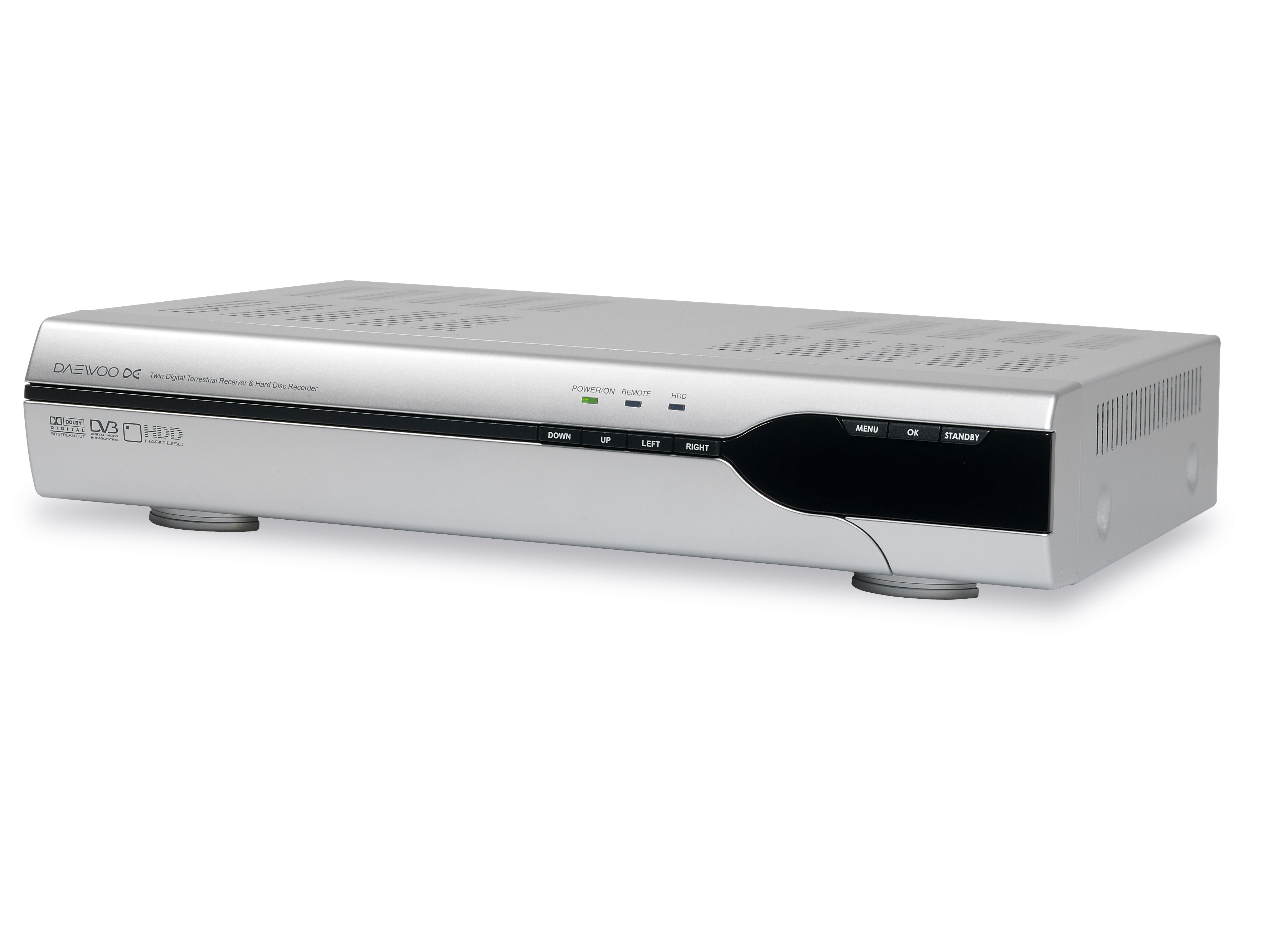TechRadar Verdict
Daewoo's budget box packs in far more than the average Freeview PVR
Pros
- +
Easy to use
- +
Lots of Options
Cons
- -
No editing or recording transfer
- -
Odd menu colour scheme
Why you can trust TechRadar
Budget Freeview PVRs are two a penny (well, not literally) in supermarkets these days, typically offering slim specs to match the slender price tag.
The Daewoo 9503T, however, proves the exception to the rule, packing in far more than we expected for the money.
It's a twin-tuner PVR with dual recording and a 160GB hard disk capable of storing about 80 hours of TV (an 80GB version, the 9502T is also available for around £130).
Roughly the size of your average VCR, the PVR has a far from budget-looking fascia adorned with LED indicators, a green LED display that displays channel numbers and a smattering of operating buttons if you lose the remote.
Talking of which, the effort included here is a cut above the norm; the remote is reassuringly weighty and features clearly labelled, well-placed buttons covering all the important functions of the machine. Kudos to Daewoo for making the central left and direction buttons double as alternative fast-forward and rewind buttons - a canny design decision which quickly becomes instinctive.
The rear panel, meanwhile, has a fairly standard selection of connections for a PVR of this type, comprising twin Scarts with RGB support on the TV version, together with a UHF loopthrough (a modulator is included for those without Scart connectors on their TV), an optical digital audio output and stereo phonos.
The menu system is very easy to navigate and displays a surprising wealth of options, although its white-and-red colour scheme may be can be a little harsh on the eyes when browsing the EPG.
It features a grid of channels which can be shrunk or expanded to suit and set to display TV or radio channels only. You can search for channels by genre and also use it to schedule recordings (of both TV and radio channels) and there's also manual timer with once, daily or weekly repeat settings.
You can re-order and rename channels in the main channel list and create up to five favourite channel lists. There's a also Picture-in-Picture option for keeping an eye on what's on the other side.
Recordings are stored in the Recording Library with their name and time and you can set a buffer either side of a recording to counter incidences of over-running. You can also PIN-lock them, and set chapter points (essentially bookmarks), bar them from being automatically deleted when disk space is limited and watch them from the beginning while they're still being recorded.
If there are minors around you can even set a watershed time when recordings cannot be made. You can also archive recordings to DVD or videotape.
Timeshifting (aka pausing live TV) gets its own dedicated button and the pause buffer can be set to last a maximum of two hours. You cannot, however, commit timeshifted material to the hard disc afterwards.
When timeshifting and navigate recordings you can smoothly fast-forward and rewind at x1.5, x3, x6, x12 and x24 normal speed and there's a 1/4 or 1/2 speed slow-motion mode.
The PVR's tuner took several minutes to locate all Freeview channels in our average test area and, providing the source channel is up to scratch, it generates natural-looking pictures for a budget box, with little artefacting in evidence even when hooked up to our 50in test TV. Audio quality is also impressive using the optical output and stereo phonos.
While enthusiasts may miss some of the sweetmeats that come with the best Freeview PVRs such as the ability to edit recordings, transfer them to PC and play MP3s, there's a lot to like about the 9503T both in terms of performance and features - making it the ideal choice for PVR newbies and those with limited funds.
Tech.co.uk was the former name of TechRadar.com. Its staff were at the forefront of the digital publishing revolution, and spearheaded the move to bring consumer technology journalism to its natural home – online. Many of the current TechRadar staff started life a Tech.co.uk staff writer, covering everything from the emerging smartphone market to the evolving market of personal computers. Think of it as the building blocks of the TechRadar you love today.
